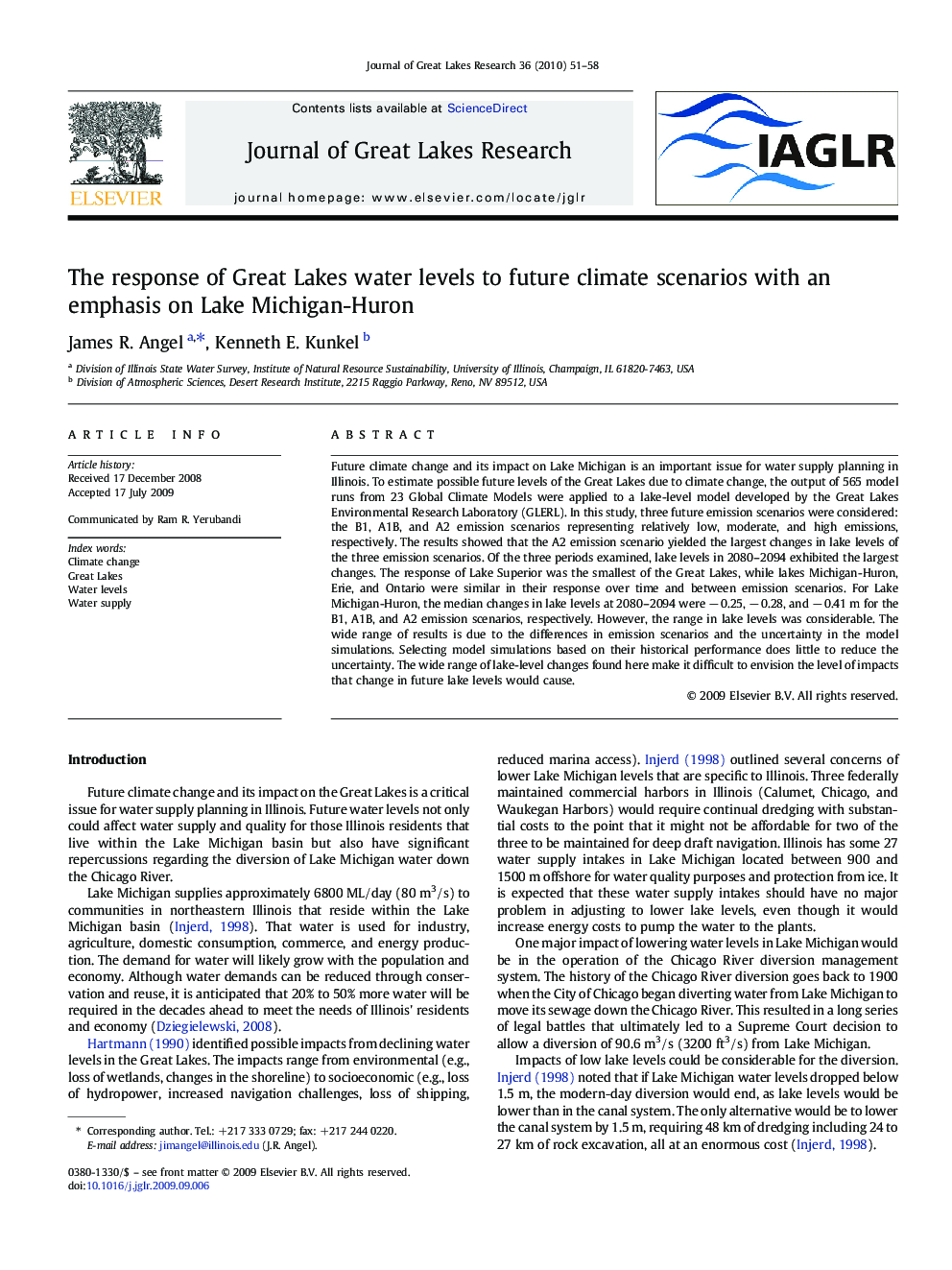| کد مقاله | کد نشریه | سال انتشار | مقاله انگلیسی | نسخه تمام متن |
|---|---|---|---|---|
| 4398406 | 1306689 | 2010 | 8 صفحه PDF | دانلود رایگان |
عنوان انگلیسی مقاله ISI
The response of Great Lakes water levels to future climate scenarios with an emphasis on Lake Michigan-Huron
دانلود مقاله + سفارش ترجمه
دانلود مقاله ISI انگلیسی
رایگان برای ایرانیان
کلمات کلیدی
موضوعات مرتبط
مهندسی و علوم پایه
علوم زمین و سیارات
علوم زمین و سیاره ای (عمومی)
پیش نمایش صفحه اول مقاله

چکیده انگلیسی
Future climate change and its impact on Lake Michigan is an important issue for water supply planning in Illinois. To estimate possible future levels of the Great Lakes due to climate change, the output of 565 model runs from 23 Global Climate Models were applied to a lake-level model developed by the Great Lakes Environmental Research Laboratory (GLERL). In this study, three future emission scenarios were considered: the B1, A1B, and A2 emission scenarios representing relatively low, moderate, and high emissions, respectively. The results showed that the A2 emission scenario yielded the largest changes in lake levels of the three emission scenarios. Of the three periods examined, lake levels in 2080-2094 exhibited the largest changes. The response of Lake Superior was the smallest of the Great Lakes, while lakes Michigan-Huron, Erie, and Ontario were similar in their response over time and between emission scenarios. For Lake Michigan-Huron, the median changes in lake levels at 2080-2094 were â 0.25, â 0.28, and â 0.41 m for the B1, A1B, and A2 emission scenarios, respectively. However, the range in lake levels was considerable. The wide range of results is due to the differences in emission scenarios and the uncertainty in the model simulations. Selecting model simulations based on their historical performance does little to reduce the uncertainty. The wide range of lake-level changes found here make it difficult to envision the level of impacts that change in future lake levels would cause.
ناشر
Database: Elsevier - ScienceDirect (ساینس دایرکت)
Journal: Journal of Great Lakes Research - Volume 36, Supplement 2, 2010, Pages 51-58
Journal: Journal of Great Lakes Research - Volume 36, Supplement 2, 2010, Pages 51-58
نویسندگان
James R. Angel, Kenneth E. Kunkel,